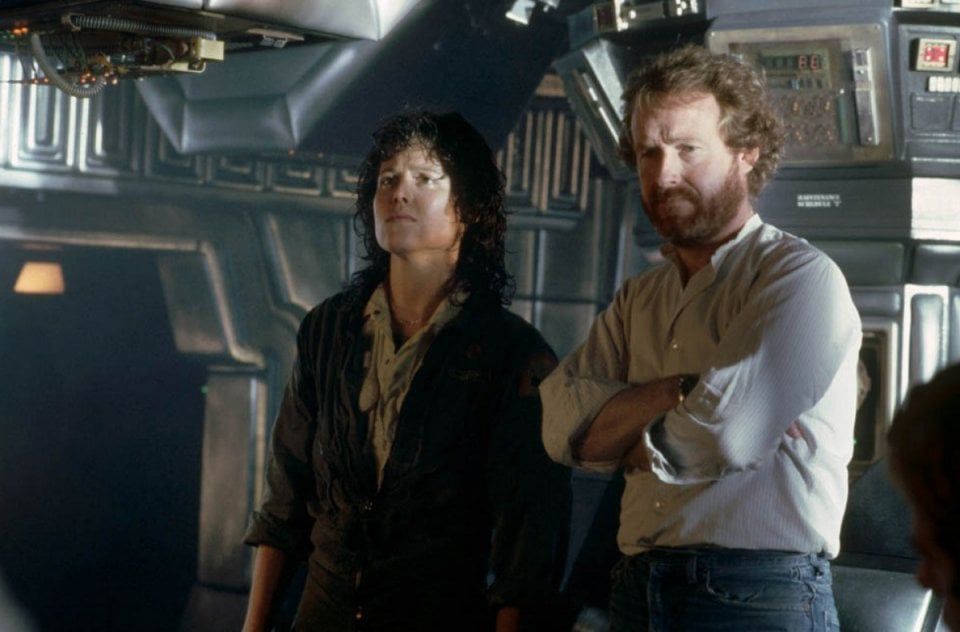“I didn’t steal Alien from anyone, rather… I stole it from everyone”, said screenwriter Dan O’Bannon. Because, in an age of copy and paste, Alien Of Ridley Scott reminds us of a fundamental rule: it is not important to be innovative, but it is vital to have the ability to tell a story from another perspective. If everything has already been said, we must somehow start from the certainties to create the myth, adapting it to a changed and changing language. And it is undeniable that, for 45 years, Alien we have rewritten the rules of science fiction horror, however, binding itself to a well-structured sci-fi imagery, as well as the son of those masters who, still today, resonate in the writing of the great authors of the genre. Watching (and rewatching) Alien it is in fact clear how much the narrative scheme staged by Ridley Scott is anchored to the stylistic features of 1950s and 1960s science fiction. If enough has been written about the film, which was released in 1979 (in May in the USA, in October in Italy), let’s try to return to the film from another angle, observing today’s science fiction cinema, yet linking it to the poetics of a work who made dryness his poetic meter, passing it down in three sequels, several spin-offs and a direct sequel, that is Alien: Romulus of the good Fede Álvarez who, chronologically speaking, comes first Aliens – Final Clash.
A precise cosmos, and the suggestion born from the intuition of Dan O’Bannon who, more than others, was able to leave his cinematic vision imprinted without ever denying the origins of his revolutionary ideas: a spaceship, an on-board computer, a cat and a very tough cosmonaut with the perfect face of Sigourney Weaver fighting against the dominance of a clandestine arthropod (the actress was suggested to Ridley Scott by Warren Beatty, who had seen her on Broadway). And as often happens, fate collides with chance: after working on Dark Star by John Carpenter, O’Bannon wanted to better develop what it could be “a horror set in space”not before working with Alejandro Jodorowsky on the cursed adaptation of Dunes. The rest is history: that film never saw the light, but the screenwriter had the jolt to best define Alien, which in some way draws inspiration from HR Giger’s paintings and mixing Terror in space by Mario Bava and The Forbidden Planet by Fred M. Wilcox, while thinking about The spaceship monster by Edward L. Cahn et al The shark by Steven Spielberg. Yes, a shark in space, but with the appearance of a monstrous e legendary alien.
A new science fiction?

The game was almost done: Ridley Scott, who won the role of director after presenting a storyboard to 20th Century Fox, somehow managed to revisit science fiction, dominated by the legacy of Star Warsunder a restless and disturbing shadow, updating the genre in a decidedly nuanced and, somehow, embryonic horizon in its post-modern nuance. Horror, sci-fi, drama, survival movie. Alien it has a polyglot spirit within it, capable of sharpening the tension like an Agatha Christie thriller, scaring as much as a Tobe Hoper film. “The film has not aged, and it is not obsolete. I have always been struck by the analogue spirit. They have created an incredible work without a large budget”Fede Álvarez will say, in a special featurette on Alien: Romulus premiered at the Naples Comicon.

Because we repeat it: the survival of Lieutenant Ellen Ripley, on board the Nostromo, is therefore a subsequent dramatization of some sci-fi stylistic features, re-adapted in a story in which the atmosphere, supported by the soundtrack by Jerry Goldsmith, weighs as much as the screenplay. If it’s “A film that illuminates primordial fears”again according to the director of Alien: RomulusScott’s doesn’t invent anything, all things considered, but best conveys the concept of fear and the unconscious thanks to the director’s two-dimensional vision, managing to redefine the entire sci-fi and horror cinema that came after 1979: from The thing by John Carpenter a The Abyss by James Cameron, from Zero Atmosphere by Peter Hyams to the recent ones Underwater with Kristen Stewart or Spaceman with Adam Sandler. “We didn’t have the technology of Star Wars, and a big help came from the scenography”explains Ridley Scott in conversation with Fede Álvarez. “To make the spaceship seem bigger, we shot my children, who were small at the time, from the back. The alien? For me it had to be a huge and beautiful insect”
Road to Alien: Romulus

Going from memory, these are just some of the direct offspring of Alien. But, as written in our in-depth analysis, which we want to anticipate in some way Alien: Romulus, it is important to underline how cinema is just one of the many circular arts. Today, bombarded by sequels, prequels and remakes (often ends in themselves, without soul or reason to exist beyond the not obvious commercial side), cinematography has always copied itself, and in turn has always taken inspiration from literary works , tracing archetypes, relationships, characters.

Innovation, now a very rare commodity, does not necessarily have to be sought after in a spasmodic way: the derivation of a work like Alien does not take anything away from the absolute artistic value, so much so that the success of the film, due in part to the affirmation of home video during the Eighties, is not traceable in originality, but rather in the ability to create something relevant thanks to a handful of elements, constructed and synthesized in the right way. It doesn’t take much to shape the epic, shaping the popular imagination to such an extent that it becomes a film unattainable. Ridley Scott’s Alien, and its creeping black tone, is therefore the purest terror multiplied infinitely, capturing us and shaking us, alongside Sigourney Weaver, the symbol of those female characters that the industry has finally noticed today. All this is Alien, a journey to Earth that overturns the idealization we have of space: no amazement, just a cold panic. Why up there “no one can hear you scream”.










